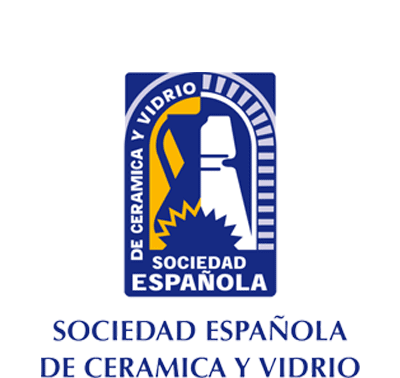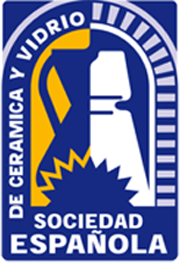07 Mar Tesis Doctoral Miquel Turón Viñas
Mechanical properties of co-doped zirconia ceramics.
Miquel Turón Viñas
Universitat Politècnica de Catalunya, Barcelona, 11 de enero de 2018
Director:
Marc Anglada Gomila. Departamento de Ciencia de Materiales e Ingeniería Metalúrgica, Universitat Politècnica de Catalunya. Barcelona
Tetragonal polycrystalline zirconia, commonly stabilised with 3 mol% yttria (3Y-TZP), became one of the most interesting ceramics for biomedical applications due to its biocompatibility and high mechanical properties. Among them, its high fracture toughness should be highlighted, which is due to the stress-induced tetragonal-to-monoclinic (t→m) phase transformation near a crack tip. However, the tetragonal grains can also spontaneously transform to monoclinic phase in a humid environment, phenomenon known as low-temperature degradation (LTD), which is an important issue for applications in which water is present.
Several methods have been proposed to increase the LTD resistance in zirconia, which range from improving the fabrication process in terms of grain size, density or residual stresses, to doping zirconia with other oxides, like magnesia or ceria.
Particularly, ceria-stabilised zirconia (Ce-TZP) possesses higher LTD resistance and fracture toughness than 3Y-TZP, but lower fracture strength and hardness, partly because of its larger grain size. The proposed approach consists in improving the mechanical properties controlling the grain growth by the addition of solutes.
Thus, on the one hand, this work focuses on obtaining and characterising compositions that balance a high resistance to LTD with mechanical properties.
Regarding the latter, fracture toughness is a key parameter to characterise advanced ceramics. Sometimes, the brittle behaviour of ceramics is an important hindrance for measuring fracture toughness. Elastic fracture mechanics is based on the assumption that materials are homogenous, continuous, isotropic, and cracks are idealised with zero crack-tip radius. Inducing a crack sharp enough and with a controlled shape and length in ceramics has been a critical issue during decades.
Hence, the other main objective of this work is to develop a methodology to measure the fracture toughness of ceramics more accurately and easy to reproduce. The method proposed consists in the fabrication of small notches by ultra-short pulsed laser ablation.
This dissertation is presented as a compendium of published articles. The first chapter consist in an introductory state-of-the-art of zirconia materials, the different approaches to produce better compositions and the problems determining some of its mechanical properties. Chapter 2 consist in the objectives and coverage of the thesis. A summary of the most important findings can be found in Chapter 3, and Chapter 4 includes the final conclusions and future perspectives derived from this work. The articles are included at the end of this dissertation, as well with an additional supplementary non-published-yet work.
This thesis is submitted for the degree of Doctor of Philosophy at the Universitat Politècnica de Catalunya. The research described in this work was carried out by the author during the period from December 2012 to October 2017 under the supervision of Prof. M. Anglada in the Department of Materials Science and Metallurgical Engineering at the Universitat Politècnica de Catalunya, and during 3 research stays during 2015, 2016 and 2017 (406 days in total) in MTM Department at KU Leuven under the supervision of Prof. J. Vleugels. The work described in this dissertation is original, unless otherwise detailed references are provided.
List of publications
Works included in the thesis:
Turon-Vinas, M. & Anglada, M. Fracture toughness of zirconia from a shallow notch produced by ultra-short pulsed laser ablation. J. Eur. Ceram. Soc. 34, 3865–3870 (2014).
Turon-Vinas, M. & Anglada, M. Assessment in Si3N4 of a new method for determining the fracture toughness from a surface notch micro-machined by ultra-short pulsed laser ablation. J. Eur. Ceram. Soc. 35, 1737–1741 (2015).
Turon-Vinas, M., Morillas, J., Moreno, P. & Anglada, M. Evaluation of damage in front of starting notches induced by ultra-short pulsed laser ablation for the determination of fracture toughness in zirconia. J. Eur. Ceram. Soc. 37, 5127–5131 (2017).
Turon-Vinas, M., Roa, J. J., Marro, F. G. & Anglada, M. Mechanical properties of 12Ce–ZrO2/3Y–ZrO2 composites. Ceram. Int. 41, 14988–14997 (2015).
Turon-Vinas, M., Zhang, F., Vleugels, J. & Anglada, M. Effect of calcia co-doping on ceria-stabilized zirconia. J. Eur. Ceram. Soc.38, 2621–2631 (2018).
Non-included related articles
Turon-Vinas, M.; Anglada, M.Strength and fracture toughness of zirconia dental ceramics. Dental materials. 34 – 3, pp. 365 – 375. 01/03/2018.
<https://www.sciencedirect.com/science/article/pii/S0109564117307820>.
ISSN 0109-5641
DOI: 10.1016/j.dental.2017.12.007
Roa, J.J.; Turon-Vinas, M.; Tovar-Vargas, D.; Ledesma, J.; Anglada, M.Chemical and nanoindentation study of diffusion during sintering of 12Ce-ZrO2/3Y-ZrO2 powder layers. Ceramics international. 44 – 2, pp. 2485 – 2490. 01/02/2018.
<http://www.sciencedirect.com/science/article/pii/S027288421732432X?via%3Dihub>.
ISSN 0272-8842
DOI: 10.1016/j.ceramint.2017.10.226
Roa, J.J.; Aboulfadl, H.; Barrirero, J.; Turon-Vinas, M.; Mücklich, F.; Anglada, M.Chemical segregation in a 12Ce-ZrO2/3Y-ZrO2 ceramic composite. Materials characterization. 132, pp. 83 – 91. 01/10/2017.
<http://www.sciencedirect.com/science/article/pii/S1044580317306630?via%3Dihub>.
ISSN 1044-5803
DOI: 10.1016/j.matchar.2017.07.045
Melk, L.; Mouzon, J.; Turon-Vinas, M.; Akhtar, F.; Antti, Marta-lena; Anglada, M.Surface microstructural changes of spark plasma sintered zirconia after grinding and annealing. Ceramics international. 42 – 14, pp. 15610 – 15617. 01/11/2016.
<http://www.sciencedirect.com/science/article/pii/S0272884216310689>.
ISSN 0272-8842
DOI: 10.1016/j.ceramint.2016.07.014
Melk, L.; Turon-Vinas, M.; Roa, J.J.; Antti, M.; Anglada, M.The influence of unshielded small cracks in the fracture toughness of yttria and of ceria stabilised zirconia. Journal of the European ceramic society. 36 – 1, pp. 147 – 153. Elsevier, 01/01/2016.
<http://www.sciencedirect.com/science/article/pii/S0955221915301369>.
ISSN 0955-2219
DOI: 10.1016/j.jeurceramsoc.2015.09.017
Roa, J.J.; Turon-Vinas, M.; Anglada, M.Surface grain size and texture after annealing ground zirconia. Journal of the european ceramic society. Elsevier, 2016.
<http://www.sciencedirect.com/science/article/pii/S0955221915302818>.
ISSN 0955-2219
DOI: 10.1016/j.jeurceramsoc.2015.12.022
Calificación: Excelente Cum Laude
Miembros del Tribunal:
Presidente: Luis Miguel Llanes Pitarch (Universitat Politècnica de Catalunya (UPC), Barcelona, España)
Secretario: Jozef Vleugels (Katholieke Universiteit Leuven (KU Leuven), Bélgica)
Vocal: Laurent Gremillard (Institut National des Sciences Appliquees de Lyon (INSA Lyon), Francia)





